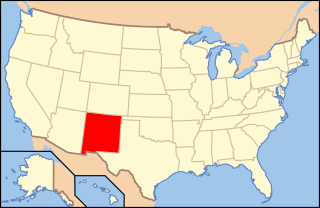| Criminal defenses |
|---|
| Part of the common law series |
|
| Other common law areas |
| Portals |
In the United States, self-defense is an affirmative defense that is used to justify the use of force by one person against another person under specific circumstances.
| Criminal defenses |
|---|
| Part of the common law series |
|
| Other common law areas |
| Portals |
In the United States, self-defense is an affirmative defense that is used to justify the use of force by one person against another person under specific circumstances.
In the U.S., the general rule is that "[a] person is privileged to use such force as reasonably appears necessary to defend him or herself against an apparent threat of unlawful and immediate violence from another." [1] In cases involving non-deadly force, this means that the person must reasonably believe that their use of force was necessary to prevent imminent, unlawful physical harm. [2] When the use of deadly force is involved in a self-defense claim, the person must also reasonably believe that their use of deadly force is immediately necessary to prevent the other's infliction of great bodily harm or death. [3] Most states no longer require a person to retreat before using deadly force. In the minority of jurisdictions which do require retreat, there is no obligation to retreat when it is unsafe to do so or when one is inside one's own home. [4]
A person who was the initial aggressor cannot claim self-defense as a justification unless they abandon the combat or the other party has responded with excessive force. [5] If the aggressor has abandoned the combat, they normally must attempt to communicate that abandonment to the other party. [6]
In the past, one could resist an unlawful arrest and claim self-defense, however the modern trend is to move away from that rule. [7] In most jurisdictions allowing a person to resist an unlawful arrest, the state requires that the unlawful arrest be accompanied by excessive force. [8] The older view is represented by the U.S. Supreme Court case Bad Elk v. United States [9] where an off-duty Sioux police officer was granted a new trial after being convicted of killing an on-duty police officer who was attempting to illegally arrest the man, because, at the initial trial, the jury was not instructed that it could convict on a lesser offense, such as manslaughter.
In some jurisdictions, there is an imperfect self-defense rule, where an individual who mistakenly believes that he was justified in using deadly force in self-defense, but is not legally justified, may have a murder conviction reduced to a manslaughter conviction instead. [10]
A majority of U.S. jurisdictions do not follow the common law rule that a person must retreat prior to using deadly force, [11] but rather have rejected this theory via statutory law in what are known as "stand your ground laws", which explicitly remove the duty to retreat. [12] Whether the person retreated may, however, be relevant as to the reasonableness of the use of deadly force, where there isn't an explicit statutory law which affirmatively removes the duty. [13] Under the common law rule and the rule in a minority of states, the actor must have shown that he or she retreated prior to using deadly force unless: 1) it was not safe to retreat; or 2) the incident occurred at the actor's home. [14] In addition, the Model Penal Code requires retreat or compliance, if it can be done with complete safety. [15]

Murder is the unlawful killing of another human without justification or valid excuse, especially the unlawful killing of another human with malice aforethought. This state of mind may, depending upon the jurisdiction, distinguish murder from other forms of unlawful homicide, such as manslaughter. Manslaughter is killing committed in the absence of malice, brought about by reasonable provocation, or diminished capacity. Involuntary manslaughter, where it is recognized, is a killing that lacks all but the most attenuated guilty intent, recklessness.
The right of self-defense is the right for people to use reasonable or defensive force, for the purpose of defending one's own life (self-defense) or the lives of others, including – in certain circumstances – the use of deadly force.

Deadly force, also known as lethal force, is the use of force that is likely to cause serious bodily injury or death to another person. In most jurisdictions, the use of deadly force is justified only under conditions of extreme necessity as a last resort, when all lesser means have failed or cannot reasonably be employed.

Self-defense is a countermeasure that involves defending the health and well-being of oneself from harm. The use of the right of self-defense as a legal justification for the use of force in times of danger is available in many jurisdictions.
An affirmative defense to a civil lawsuit or criminal charge is a fact or set of facts other than those alleged by the plaintiff or prosecutor which, if proven by the defendant, defeats or mitigates the legal consequences of the defendant's otherwise unlawful conduct. In civil lawsuits, affirmative defenses include the statute of limitations, the statute of frauds, waiver, and other affirmative defenses such as, in the United States, those listed in Rule 8 (c) of the Federal Rules of Civil Procedure. In criminal prosecutions, examples of affirmative defenses are self defense, insanity, entrapment and the statute of limitations.
The concept of justifiable homicide in criminal law is a defense to culpable homicide. Generally, there is a burden to produce exculpatory evidence in the legal defense of justification.
A castle doctrine, also known as a castle law or a defense of habitation law, is a legal doctrine that designates a person's abode or any legally occupied place as a place in which that person has protections and immunities permitting one, in certain circumstances, to use force to defend oneself against an intruder, free from legal prosecution for the consequences of the force used. The term is most commonly used in the United States, though many other countries invoke comparable principles in their laws.

In law, the duty to retreat, or requirement of safe retreat, is a legal requirement in some jurisdictions that a threatened person cannot harm another in self-defense when it is possible to instead retreat to a place of safety. This requirement contrasts with the right in some other jurisdictions to stand one's ground, meaning being allowed to defend one's self instead of retreating.
A stand-your-ground law, sometimes called a "line in the sand" or "no duty to retreat" law, provides that people may use deadly force when they reasonably believe it to be necessary to defend against certain violent crimes. Under such a law, people have no duty to retreat before using deadly force in self-defense, so long as they are in a place where they are lawfully present. The exact details vary by jurisdiction.
Self-defence is a defence permitting reasonable force to be used to defend one's self or another. This defence arises both from common law and the Criminal Law Act 1967. Self-defence is a justification defence rather than an excuse.
Manslaughter is a common law legal term for homicide considered by law as less culpable than murder. The distinction between murder and manslaughter is sometimes said to have first been made by the ancient Athenian lawmaker Draco in the 7th century BC.
Imperfect self-defense is a common law doctrine recognized by some jurisdictions whereby a defendant may mitigate punishment or sentencing imposed for a crime involving the use of deadly force by claiming, as a partial affirmative defense, the honest but unreasonable belief that the actions were necessary to counter an attack. Not all jurisdictions accept imperfect self-defense as a basis to reduce a murder charge.
In the state of Maryland, the right of self-defense is mostly governed by case law, but there is also a statute.
The Penal Law of the State of New York combines justification and necessity into a single article, Article 35. "Defense of Justification" comprises sections 35.05 through 35.30 of the Penal Law. The general provision relating to necessity, section 35.05, provides:
§ 35.05 Justification; generally.
Unless otherwise limited by the ensuing provisions of this article defining justifiable use of physical force, conduct which would otherwise constitute an offense is justifiable and not criminal when:

Criminal law is a system of laws that is connected with crimes and punishments of an individual who commits crimes. In comparison, civil law is where the case argues their issues with one entity to another entity with support of the law. Crimes can vary in definition by jurisdiction but the basis for a crime are fairly consistent regardless.

Gun laws in New Mexico regulate the sale, possession, and use of firearms and ammunition in the state of New Mexico in the United States.

Gun laws in South Carolina regulate the sale, possession, and use of firearms and ammunition in the state of South Carolina in the United States.

Plummer v. State was an 1893 court case decided by the Indiana Supreme Court. The case overturned a manslaughter conviction, ruling that the convicted defendant had been protecting himself from the illegal use of force by a police officer. It is widely quoted on the internet, under the false belief that it gives citizens the right to resist an unlawful arrest by force, including deadly force. The full citation is Plummer v. State, 135 Ind. 308, 34 N.E. 968 (1893).
Manslaughter is a crime in the United States. Definitions can vary among jurisdictions, but manslaughter is invariably the act of causing the death of another person in a manner less culpable than murder. Three types of unlawful killings constitute manslaughter. First, there is voluntary manslaughter which is an intentional homicide committed in "sudden heat of passion" as the result of adequate provocation. Second, there is the form of involuntary manslaughter which is an unintentional homicide that was committed in a criminally negligent manner. Finally, there is the form of involuntary manslaughter which is an unintentional homicide that occurred during the commission or attempted commission of an unlawful act which does not amount to a felony.
Bad Elk v. United States, 177 U.S. 529 (1900), was a United States Supreme Court case in which the Court held that an individual had the right to use force to resist an unlawful arrest and was entitled to a jury instruction to that effect.